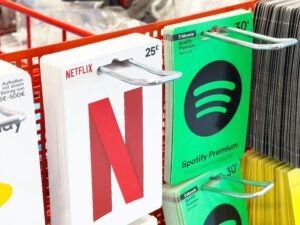“On TV & Video” is a column exploring opportunities and challenges in advanced TV and video.
Today’s column is by John Hamilton, CEO and co-founder, TVDataNow.
The biggest misconception in ad tech in 2021 is that measuring ad performance on connected TV (CTV) is difficult or impossible. This perception exists because there’s no real universal measurement standard or one with “common currency.”
Despite that, CTV is very much an in-demand part of the media mix. CTV advertising is predicted to top $18.29 billion by 2024, according to eMarketer, but a lack of a universal standard of measurement like Nielsen ratings for linear TV measurability could hamper that explosive growth.
While it has not been easy to measure CTV spend in the past, there is a way. The right measurement partner can simplify and streamline this process based on its relationships with publishers. As more publishers compete for a larger budget, they will be more willing to share the valuable data that their partners are more than willing to supply to win business.
The companies expected to drive the next phase of CTV advertising growth are digital-first performance marketers, not linear-first brand marketers. They want to measure their CTV advertising the same way they do their digital advertising: on an outcomes basis.
Specifically, they want to measure the performance on cost-per-acquisition (CPA) or Return on Ad Spend (ROAS) bases. And they want to be able to optimize the performance of these campaigns to improve the CPA or ROAS. This is possible today in CTV advertising. Here are four ways to achieve measurability from your CTV campaigns:
1. Work with a trusted measurement provider. Many advertisers go into CTV with the point of view expressed above — that there’s no standardized measurement, so there’s no need to request additional data from the publisher. This is not the case. A well-established marketing partner knows what data each publisher can and will provide and can help advertisers make informed decisions on where to spend their money.
2. Skip programmatic, buy direct. Buying programmatically may feel more cost effective initially, but you lose out on rich data from your spend. Programmatic campaigns only provide impression, reach and frequency reporting. Only a direct relationship and buy with a publisher will get you data such as content (genre, show) and data delivered through video ad serving template (VAST) macros (e.g., IFA (identifiers for advertising), pod position, consumer experience with the ad).
3. Request the right data. Many publishers are sitting on a ton of valuable data, which they don’t necessarily promote or give to any advertiser. Brands should ask their publisher (e.g., Tubi, Pluto, Hulu) and platform (e.g., Roku) partners to provide as much data as possible. Data often available includes:
- CTV exposure data. You’ll want to capture as much other exposure data as possible, such as show-level data and data collected in VAST macros (e.g., pod position, IFA).
- Genre Data: We’ve seen a lot of success with brands optimizing against genre performance as certain content matches well with certain advertisers and products. It’s important to get a much better sense of what types of content your ads are running against.
- Conversion Data: You should be able to collect data like identifiers for advertising (IFAs), CTV IDs, device IDs, IP address and order value to better match the pieces. In addition, you can retarget those users through mobile and digital ads.
4. Match conversion exposure data to conversion data using an identity graph. Now that you have all of this data that is not necessarily “off the shelf,” your measurement partner will use a proprietary internal identity graph or work with a partner like LiveRamp. A Facebook IQ study found that 94% of people use their smartphones while watching TV. Knowing whether your CTV ad pushes someone to take an action on his laptop or phone is perhaps the most important piece of knowledge you can track.
These steps can help marketers optimize performance based on content CPA/ROAS. Once you have all this data and it’s been matched via an identity graph, you’re set to optimize your performance. You can place content specific buys on your CTV publishers and platforms. Don’t let naysayers tell you achieving meaningful data is impossible in CTV. It is not only possible, but a true differentiator when looking to expand performance-based buys.













